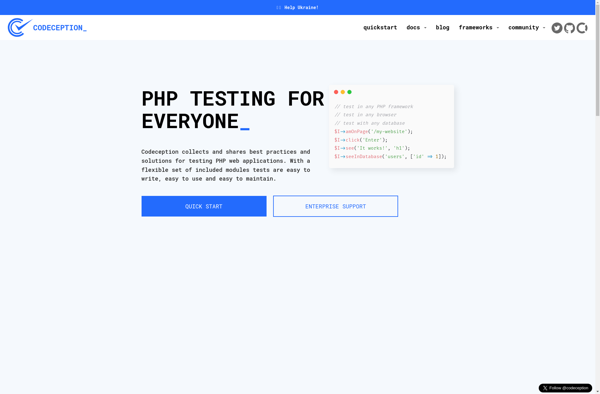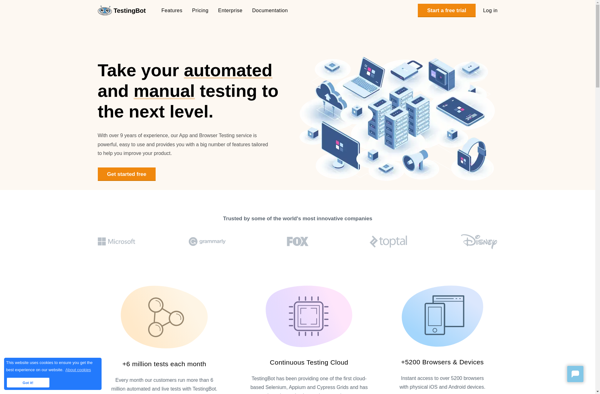Description: Codeception is an open-source PHP testing framework that allows you to write acceptance, functional, integration, and unit tests for your web applications. It provides an intuitive interface and powerful tools to make testing PHP applications easier and faster.
Type: Open Source Test Automation Framework
Founded: 2011
Primary Use: Mobile app testing automation
Supported Platforms: iOS, Android, Windows
Description: TestingBot is a cloud-based automated testing platform that supports running tests on real browsers and mobile devices. It provides integration with CI tools like Jenkins and allows testing across various browsers, operating systems and devices.
Type: Cloud-based Test Automation Platform
Founded: 2015
Primary Use: Web, mobile, and API testing
Supported Platforms: Web, iOS, Android, API

